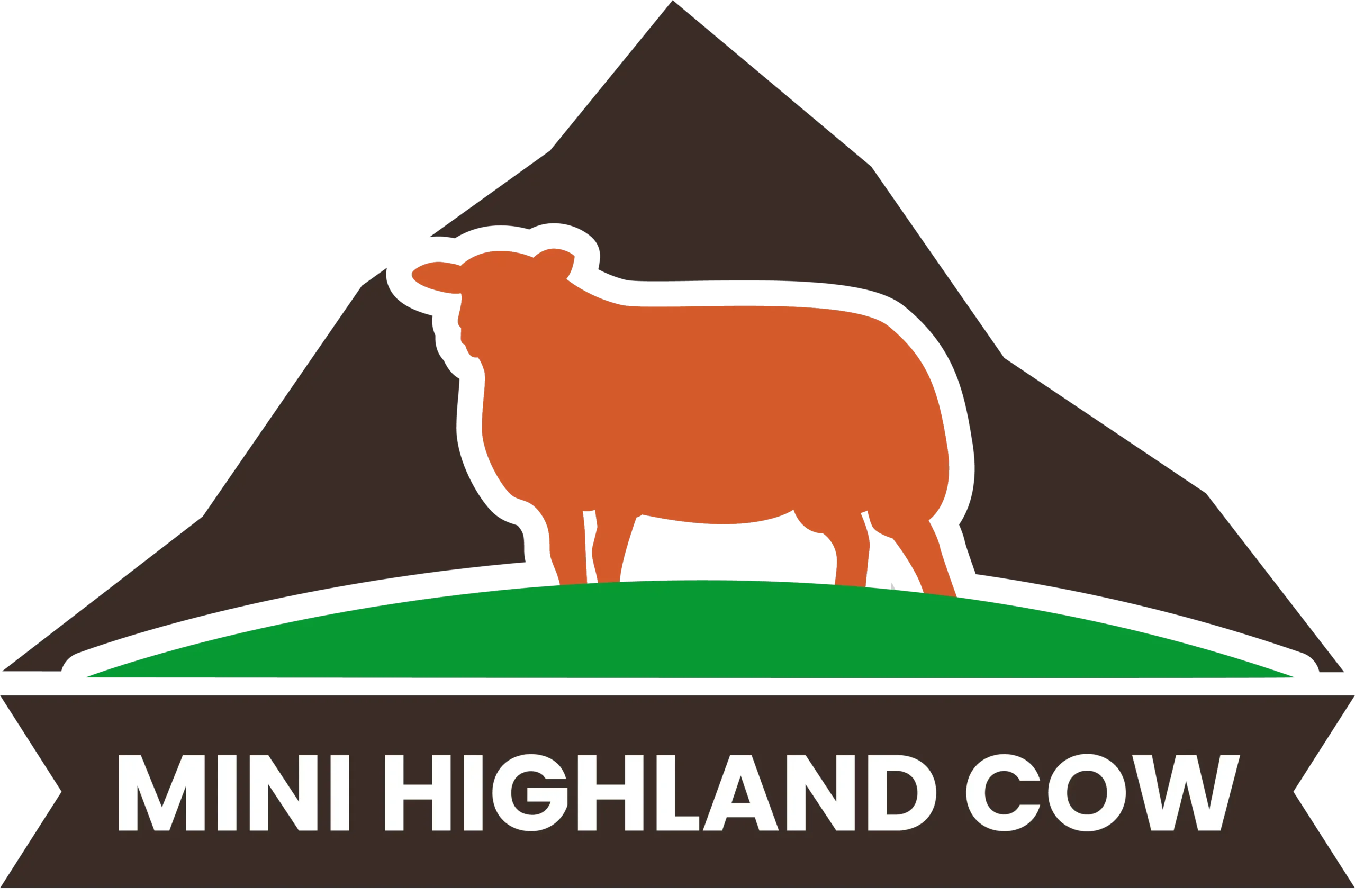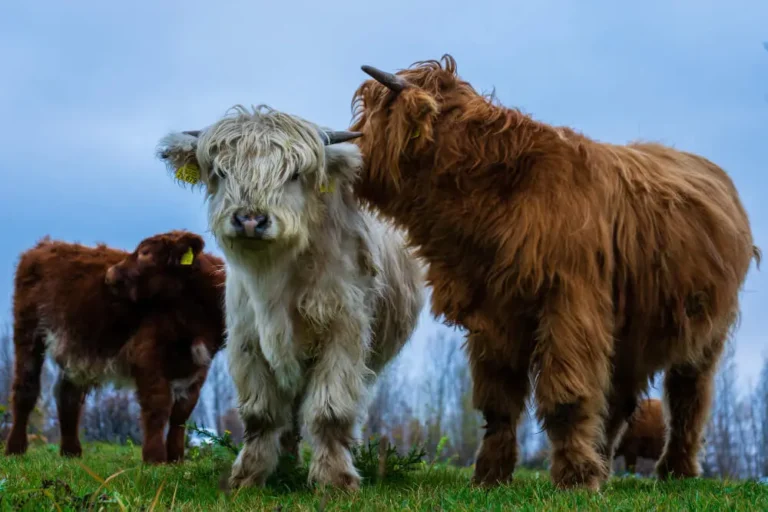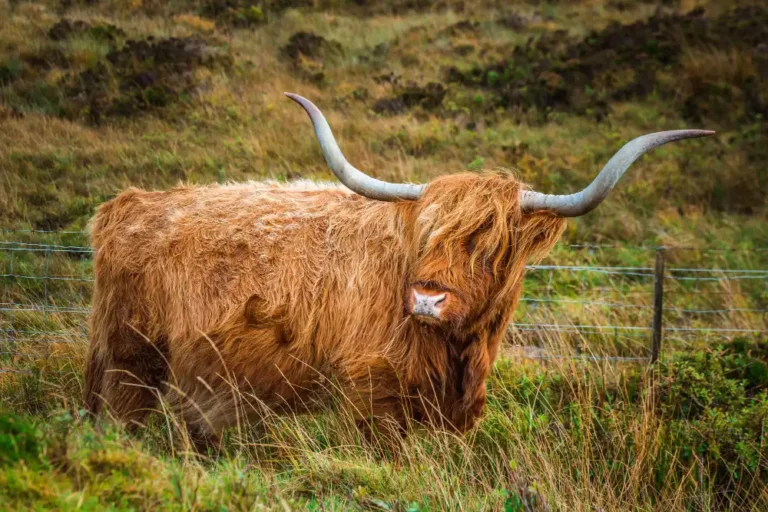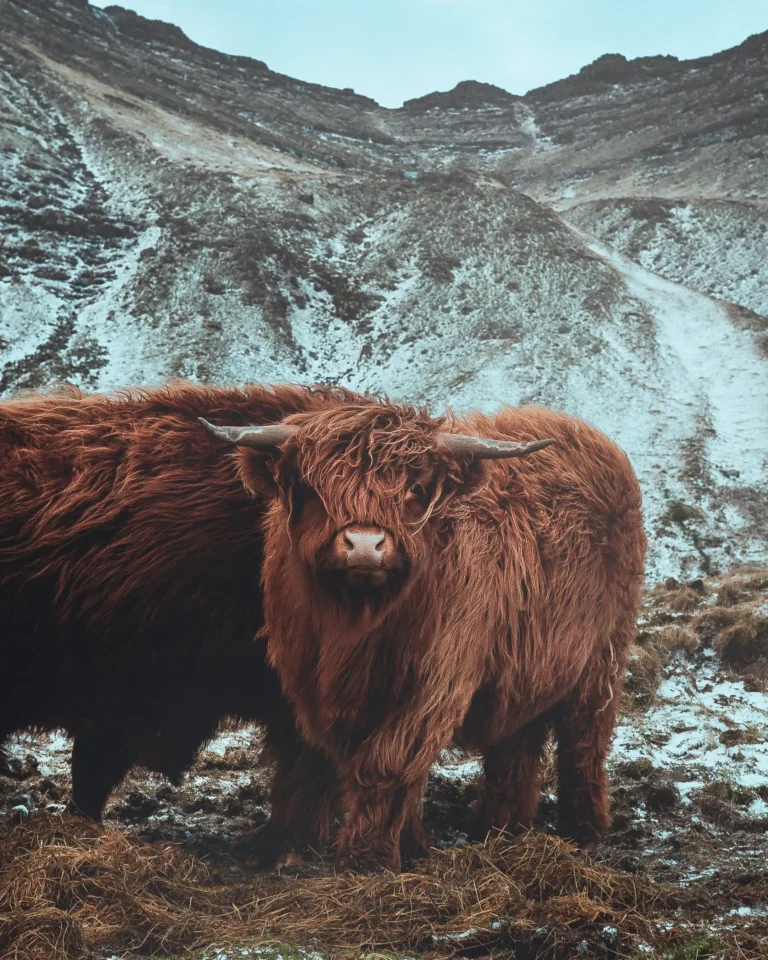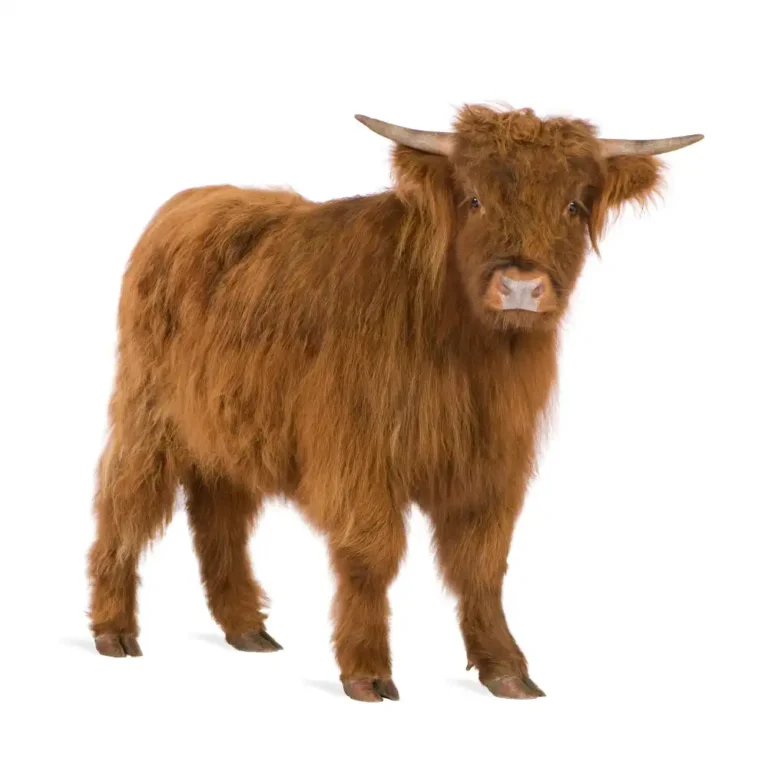Breeding Practices for Mini Highland Cows: Techniques and Challenges
The art of breeding miniature Highland cattle, including mini Highland cows, represents a fascinating intersection of tradition and innovation. These miniature cows, derived from their larger counterparts, the Scottish Highland cattle, are gaining popularity on small farms due to their size, temperament, and versatility as dairy cows and beef cattle.
However, breeding these mini cattle, often called Highland or Highlanders, presents techniques and unique challenges and requires responsible breeding practices.
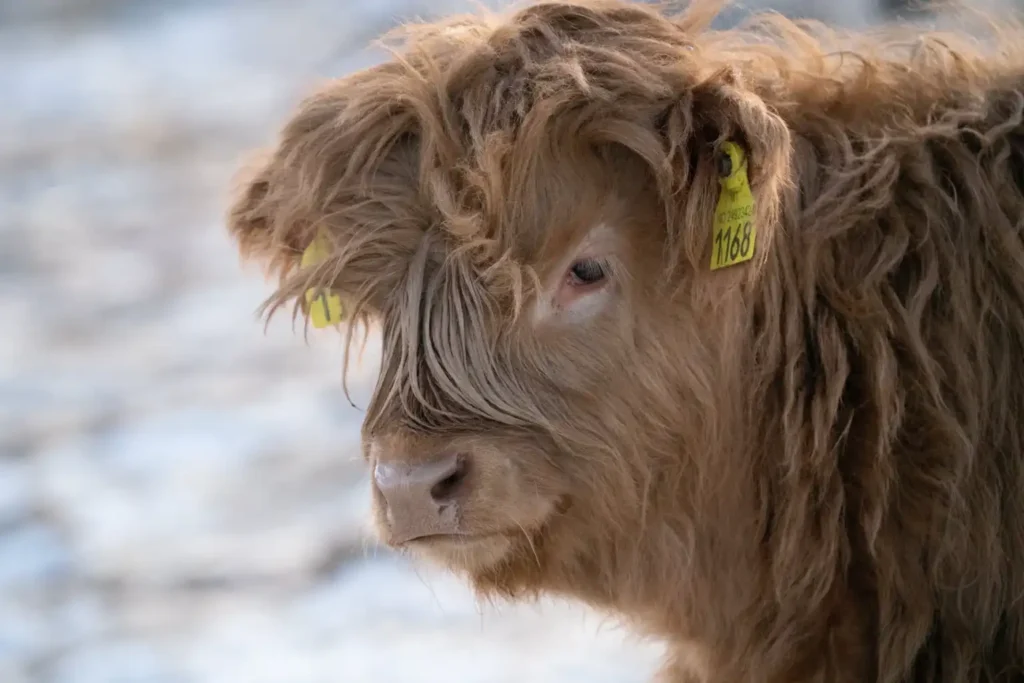
Origin and Characteristics
Mini Highland cows originate from Scotland and are a downsized version of the standard Highland cow. They are recognized for their long, wavy coats, which can be in shades of black, red, yellow, and dun, and large, curved horns.
However, a higher percentage of black and brindled cattle is found in the island populations compared to the mainland Highlanders. This size difference was probably due to the severe climate and limited rations the island cattle were subjected to than any genetic isolation.
Size and Lifespan
Typically, Mini Highland Cows stand at about 36 to 42 inches at the shoulder and have a lifespan of around 15 to 20 years. Their small size makes them ideal for smaller pastures and farms.
Breeding Techniques for Mini Highland Cows
Selective Breeding
Selective breeding has developed miniature cattle breeds, including mini Highland cows. These smaller cows result from careful genetic selection from cattle breeds like Dexter, another small-sized breed. The goal is to retain the characteristics of the Scottish Highland and miniature breeds while achieving a smaller stature suitable for a small farm.
The mini cattle, including the miniature belted variety, are a testament to these efforts, offering the hardy breed traits of highland cows in a more manageable size. The aim is to create a genetically stable line of Mini Highland Cows that consistently exhibits these preferred traits while also paying attention to maintaining genetic diversity and avoiding health issues associated with inbreeding.
Health Management:
Health management for Mini Highland Cows encompasses a comprehensive approach to ensuring their well-being, focusing on regular veterinary care, appropriate nutrition, and disease prevention. This involves routine health checks, vaccinations, parasite control, and a balanced diet tailored to their needs to support overall health and reproductive efficiency.
Attention is also given to their living environment, ensuring it is safe, comfortable, and conducive to their natural behaviors. Effective health management is crucial for maintaining the vitality of the herd, enhancing longevity, and ensuring the successful breeding and raising of these miniature cattle.
Breeding Timing:
Breeding timing for Mini Highland Cows is a critical aspect of their reproduction management, involving careful observation of the cows’ estrus cycles to identify the optimal time for breeding. Typically, these cows reach sexual maturity around 18 months, but breeders often wait until they are around 2 to 3 years old to ensure they are fully mature and healthy for breeding.
The estrus cycle in cows occurs approximately every 21 days, and understanding this cycle is critical for successful mating. Breeders need to monitor the cows’ heat signs, such as increased restlessness, bellowing, and mounting behavior, to time the breeding for the period when the cow is most fertile, generally a short window of 12 to 24 hours during each cycle. This precise timing is essential to maximize the chances of successful conception and healthy offspring.
Gestation and Calving:
Gestation and calving for Mini Highland Cows involve around 280 days (approximately 9 months) from conception to birth. During gestation, it’s essential to monitor the health and nutrition of the pregnant cow to ensure her well-being and the calf’s development. As calving approaches, breeders need to prepare for the possibility of assisting with the birth.
However, Mini Highland Cows often have fewer complications due to the smaller size of the calves. Post-calving, immediate attention is given to ensure the calf is nursing properly and both mother and calf are healthy. This period is critical for the survival and early development of the calf, and careful management can significantly impact the long-term health and productivity of both the mother and her offspring.
Postnatal Care:
Postnatal care for Mini Highland Cows is crucial for the health and well-being of the newborn calf and the mother. Immediately after birth, ensuring that the calf breathes correctly is essential. It begins nursing within the first few hours to receive the vital nutrients and antibodies from the mother’s colostrum.
The mother’s health should also be closely monitored for any signs of postpartum complications. Regular checks by a veterinarian can help in early identification and treatment of any health issues.
Additionally, the calf requires vaccinations and deworming as per veterinary recommendations, and both the calf and mother should have a comfortable, clean, and safe environment to promote healthy development and bonding. This attentive care in the early stages is essential for the calf’s growth, immunity development, and overall well-being.
Record Keeping:
Record-keeping for Mini Highland Cows is essential for tracking the lineage, health, breeding cycles, and other critical aspects of managing a herd. It involves meticulously documenting each animal’s birth date, parentage, medical history, vaccination dates, breeding dates, and other relevant details.
This data not only aids in making informed breeding decisions but also helps monitor the herd’s overall health and productivity. Effective record-keeping is vital for maintaining the breed’s quality, managing genetic diversity, and ensuring breeding standards and regulations adherence.
Genetic Testing:
Genetic testing in Mini Highland Cows is a modern breeding tool used to identify specific genetic traits, markers for hereditary diseases, and overall genetic diversity within the herd. By analyzing DNA samples, usually collected via blood, hair, or tissue swabs, breeders can make informed decisions about breeding pairs to avoid genetic disorders and reinforce desirable traits like size, coat color, or temperament.
This testing not only helps in improving the health and quality of the breed but also aids in maintaining genetic diversity, which is essential for the long-term viability of the mini Highland cow population.
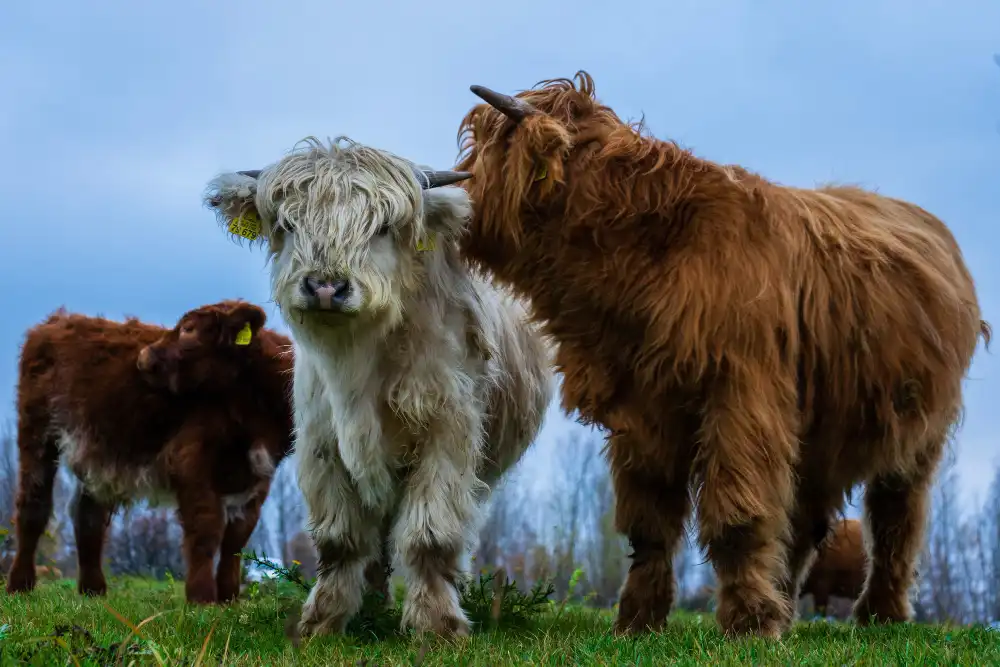
Challenges in Breeding of Mini Highland Cows
Genetic Selection:
One of the primary challenges is selecting the right genetics to ensure the cows retain their miniature size while maintaining the Highland breed’s characteristics, such as their long hair and distinct horns. This requires careful breeding practices and sometimes involves genetic testing to identify desirable traits.
Dairy and Beef Production
Mini Highland cows can be efficient dairy or beef cows, despite their size. As a dairy breed, these cows may not produce as much milk as regular dairy cattle, but they can still be good milkers for a family farm. For beef production, while one cow would yield less meat than standard beef cattle, the quality of Highland beef is often superior. Crossbreeding, or cross-breeding, with other cattle breeds is also explored to enhance milk and meat production.
Health Concerns
Due to their smaller size, Mini Highland cows are susceptible to various health concerns that require careful management. These include joint and bone issues stemming from their compact structure and specific dietary needs to prevent digestive problems.
They also face a higher risk of birth complications due to their smaller pelvis and may be more prone to respiratory issues, heart conditions, and dental problems. Their immune systems can be less robust, making them more susceptible to infections.
Additionally, selective breeding for miniature size can increase the risk of genetic disorders. Therefore, regular veterinary check-ups and a tailored approach to nutrition and health care are essential for maintaining the well-being of these unique animals.
Environmental Adaptations
Miniature Highland cows, like their standard-sized counterparts, are well-adapted to harsh weather conditions, thanks to their thick, long hair and hardy nature. However, due to their smaller size, they may require some additional considerations in extreme environments. In colder climates, their smaller body mass means they might lose body heat more quickly, so they may need other shelter or feeding strategies to maintain their energy levels.
Conversely, their dense coats could predispose them to overheating in warmer climates, necessitating ample shade and water to help regulate their body temperature. Additionally, their compact size may make them more susceptible to predators, requiring secure fencing or sheltering to ensure their safety.
Overall, while they retain some of the rugged characteristics of the Highland breed, miniature Highlands’ environmental adaptations should be carefully managed to suit their unique size and needs.
Reproductive Challenges:
Smaller breeds can sometimes face more complications during pregnancy and birth. Breeders must be vigilant about monitoring pregnant cows and may need to provide additional care or veterinary assistance during birthing. By carefully selecting smaller animals, breeders aim to create a quality cow that maintains the breed’s characteristics while being more manageable in size.
Maintaining Breed Standards:
Maintaining breed standards in miniature Highland cows presents a significant challenge, as it involves striking a balance between reducing size and preserving the distinctive characteristics of the Highland breed. This includes their iconic long, shaggy hair, robust horns, and docile temperament.
Achieving this balance requires careful, ethical breeding practices to ensure that the miniaturization process does not lead to the loss of these critical traits or introduce health problems. Genetic diversity is also challenged, as a smaller gene pool in miniature breeds can increase the risk of hereditary diseases.
Breeders must be meticulous in selecting breeding pairs to achieve the desired size and maintain the breed’s genetic health and standard features, ensuring the continuity of the breed’s heritage in a smaller package.
Ethical Breeding Practices
There are ethical considerations in breeding miniature animals, including concerns about potential health problems and the quality of life for the animals. Breeders need to ensure that their practices are profitable but also humane and ethical. Responsible breeding of mini Highland cows entails more than just managing the physical traits of these farm animals.
Breeders must consider the genetic health of the cows and calves, ensuring that the traits for smaller animals do not come at the expense of the animal’s overall well-being. This means avoiding overbreeding and ensuring that each cow can produce healthy offspring without complications.
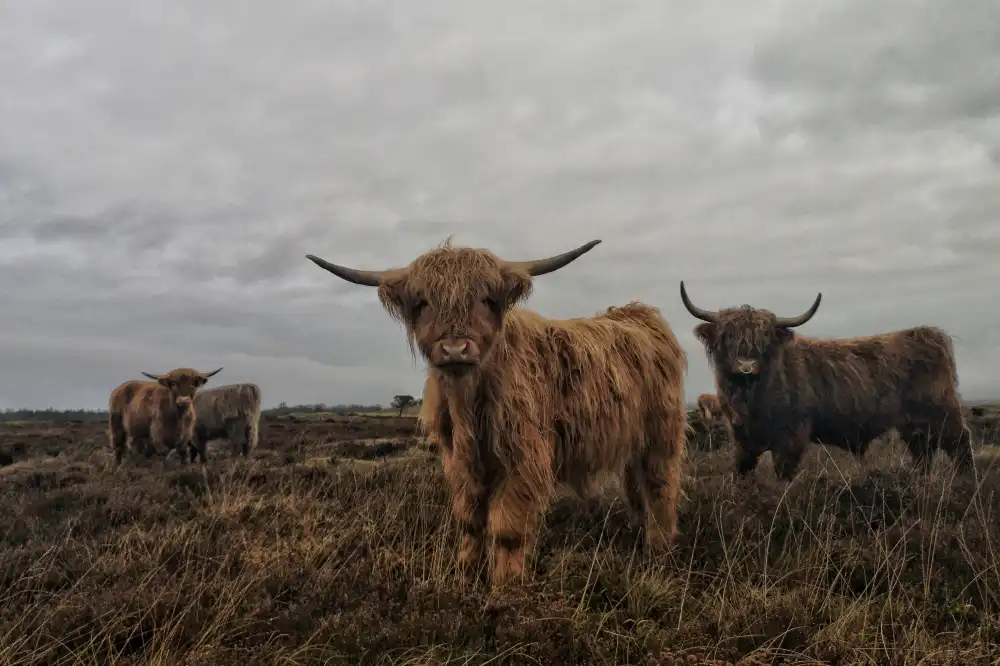
Market Demand and Practical Considerations
The market demand for mini Highland cows poses a unique challenge, as it fluctuates based on trends and the novelty appeal of these animals. While there’s a growing interest in miniature breeds for small-scale farming, pet ownership, or agritourism, this demand can lead to overbreeding and potential welfare issues if not managed responsibly.
Breeders must balance the public’s interest in these unique, more miniature cows with ethical breeding practices, ensuring that the health and well-being of the animals are not compromised for commercial gain. However, prospective buyers should weigh the pros and cons of owning such animals, including their dietary needs, space requirements, and the ability to provide plenty of fresh water and shelter.
Conclusion
Breeding practices for mini Highland cows encompass various techniques and challenges, balancing the desire to produce smaller-sized animals with the imperative to maintain health, welfare, and breed standards. From the harsh origins in Scotland’s highlands and western islands to the careful selection and feeding practices, these cattle require dedicated care. This involves careful genetic selection, vigilant health management, and ethical considerations to ensure the animals’ well-being. Breeders face specific challenges related to the animals’ size, including dietary needs, susceptibility to health issues, and birthing complications.
Market demand for these unique animals must be managed responsibly to avoid overbreeding and welfare issues. Above all, maintaining the distinctive characteristics of the Highland breed in a miniature form requires a commitment to ethical breeding practices, deep knowledge of the species, and a dedication to the long-term health and sustainability of these charming animals.
